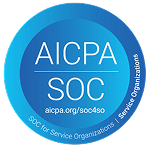Options for master’s program loans
As an international student in the U.S. or Canada, you may already know that government loans are usually not available to non-citizens. This can make funding your education a bit more challenging, but there are still options. Private loans are a common way to finance your studies, offering funding for tuition, housing, books and other expenses. Unlike master’s program loans provided by the government, private loans come from banks, credit unions and specialized lenders. Each lender sets its own terms, and most require either a cosigner or collateral before approving your loan.
What does it mean to have a cosigner?
A cosigner is usually a U.S. or Canadian citizen or permanent resident who agrees to take legal responsibility for the loan if the borrower cannot make payments. A creditworthy cosigner may improve loan approval chances and lead to better interest rates. However, many international students don’t have a cosigner in the U.S. or Canada.
What’s collateral and why do lenders require it?
You offer collateral – something valuable like property, savings or other financial assets – to secure your loan. If you fail to repay your loan, the lender has the right to take possession of the collateral to recover the loan money. For many international students, providing collateral is difficult because they don’t have personal or family assets in the U.S. or Canada and lenders often don’t accept property or savings from another country.
What if you don’t have a cosigner or collateral?
If finding a cosigner or providing collateral isn’t possible, you still have options. Some lenders offer no-cosigner private student loans. Instead of relying on credit history or financial backing, these lenders base their decisions on factors like your academic background, field of study, your university’s reputation, and your future earning potential. While private education loan rates for no-cosigner loans may be slightly higher because of the added risk for lenders, these loans can provide a helpful way to fund your master’s degree without external financial support.


